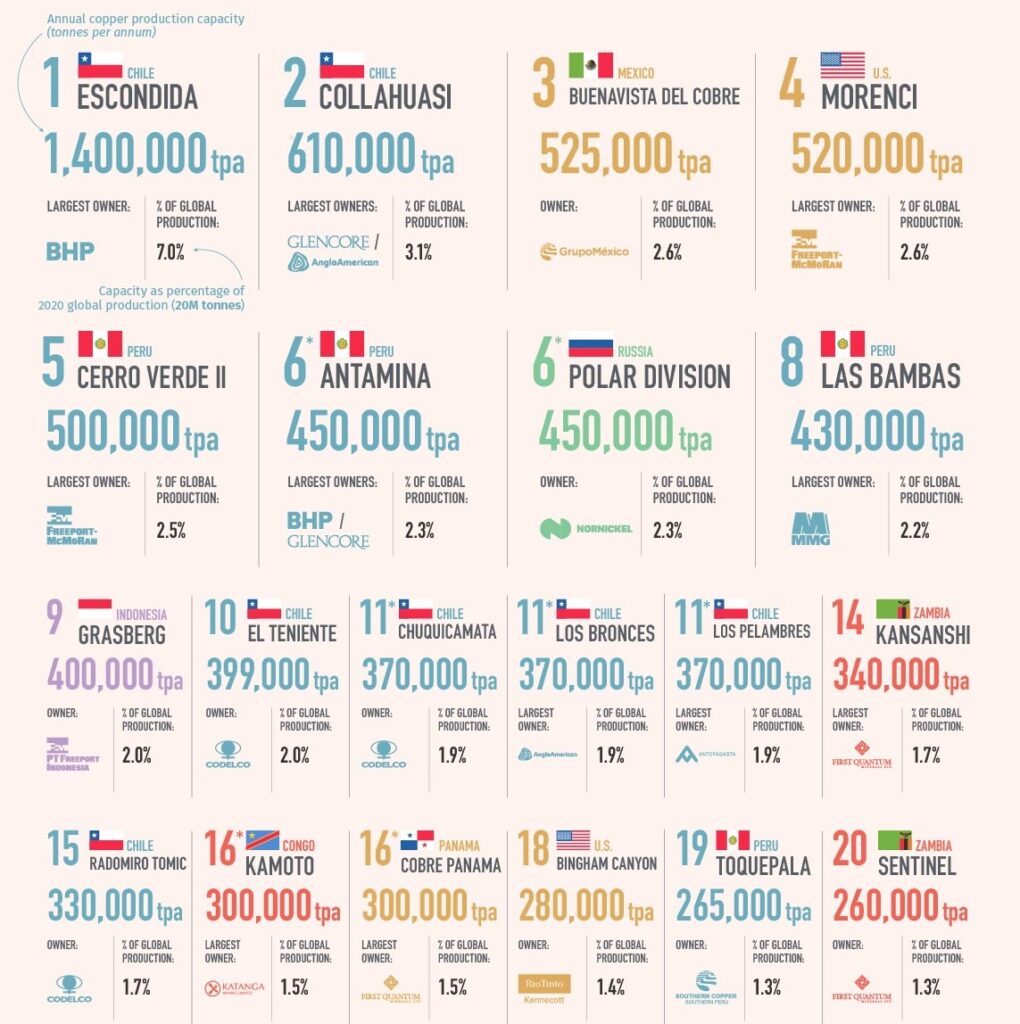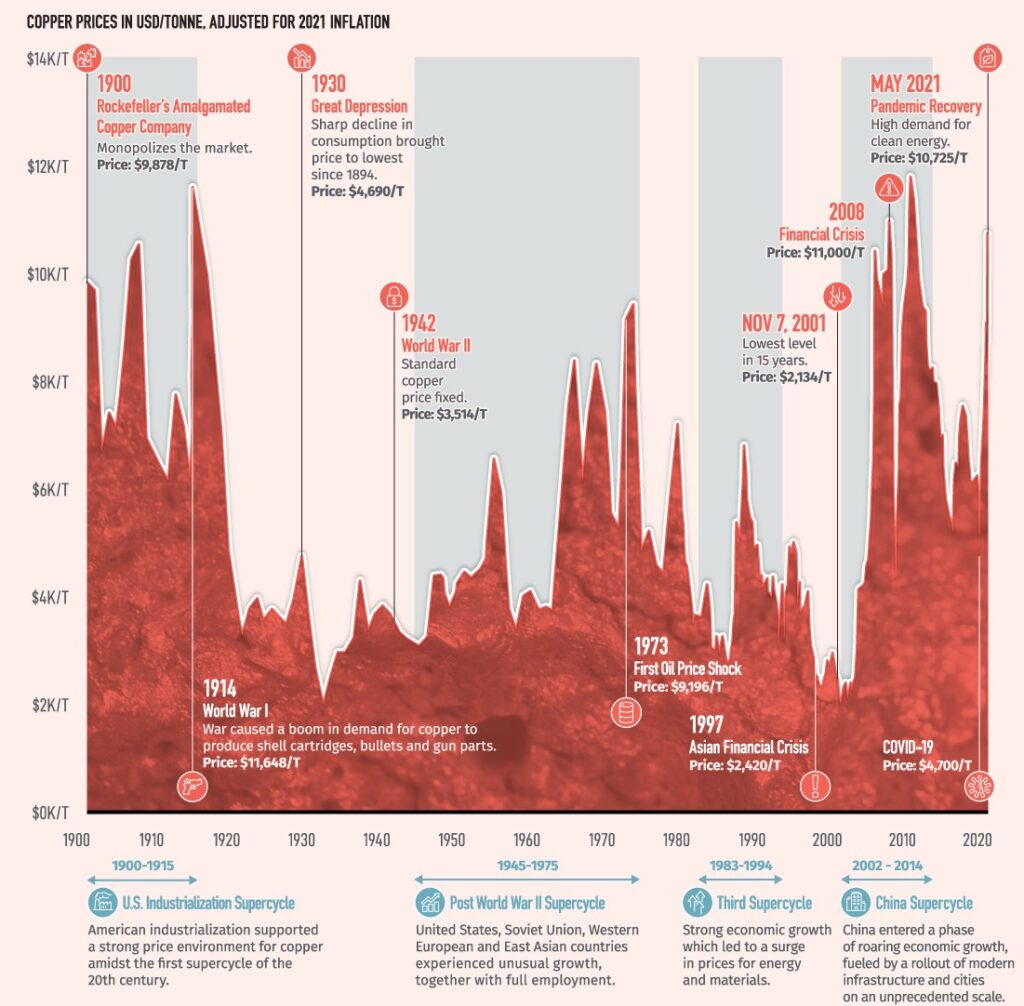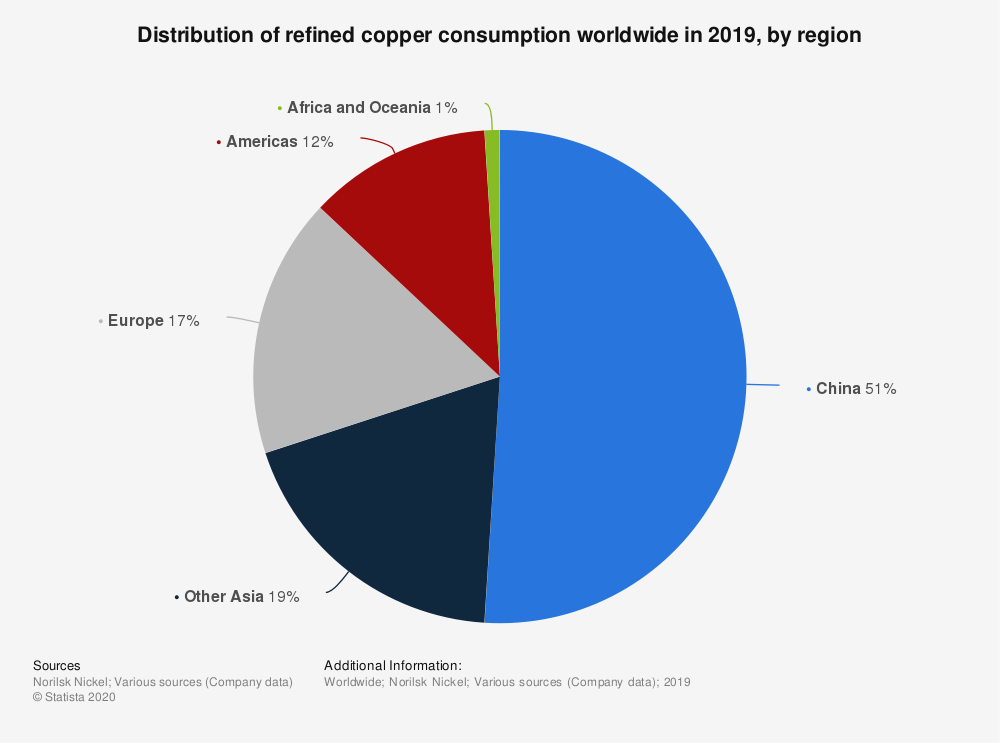Copper is a widely used hard commodity that finds applications in various sectors, including technology, construction, plumbing, and wiring. While it may be less expensive compared to precious metals like silver and gold, copper’s exceptional properties as a conductor of heat and electricity make it an attractive asset for trading.
Major copper production is concentrated in South America, with Chile and Peru being the primary producers, followed by China as the world’s leading producer of refined copper. However, the global supply of copper can be easily disrupted due to its diverse geographic origins and the involvement of developing countries as key suppliers. This vulnerability, combined with high demand from various industries, contributes to the highly liquid and volatile nature of the copper market.

Copper trading capitalises on the market’s volatility and liquidity, offering opportunities for profit through speculation and price fluctuations. However, it’s crucial for traders to be aware of the factors that influence copper prices.
Copper serves as a reliable indicator of global economic health due to its strong connection to infrastructure development. During periods of economic growth, investments in major infrastructure projects drive up the demand for copper. Conversely, economic downturns often result in a decline in copper prices as construction and infrastructure projects are put on hold.
In addition to global economic trends, several other factors impact copper trading prices:

Traders choose to invest in copper for several reasons:
If you are interested in trading copper, follow these four steps to get started:
Step 1. Select the Copper Asset
While copper bullion and coins can be traded, most copper trading occurs through futures contracts, CFDs, and ETFs. You can choose from various copper futures markets, such as COMEX copper on the New York Mercantile Exchange or LME copper on the London Metal Exchange. Consider the trading hours of different exchanges when monitoring your positions.
Step 2. Choose Your Trading Method
Copper futures typically involve physical delivery, which may not suit all traders. Derivative products like copper CFDs provide an alternative by allowing traders to speculate on the price difference between opening and closing positions without owning the underlying asset. Copper CFDs offer leverage, enabling traders to trade with a fraction of the total asset value and potentially amplify both profits and losses.
Step 3. Establish a Risk Management Strategy
Given the potential for magnified losses in leveraged trading, it’s essential to have a risk management strategy in place. Utilise tools like stop-loss orders and limit close orders to automatically close positions when they reach predetermined thresholds for acceptable losses or profits.
Step 4. Open Your First Copper Trade
Download a powerful trading platform like MetaTrader 4 or its upgraded version, MT5, to execute trades quickly and gain a transparent view of the market.

The strategies employed in copper trading depend on the type of market you are dealing with. Generally, two types of markets exist: trending and consolidating.
VT Markets provides a comprehensive trading environment for copper and a wide range of other instruments across various asset classes. Backed by advanced trading tools, in-depth analysis, expert advisors, and technical signals, VT Markets enables traders to open and close copper trading positions effectively.
Whether you are a seasoned trader or just beginning your trading journey, VT Markets offers exceptional client services and the necessary resources to support your portfolio building and trading aspirations.